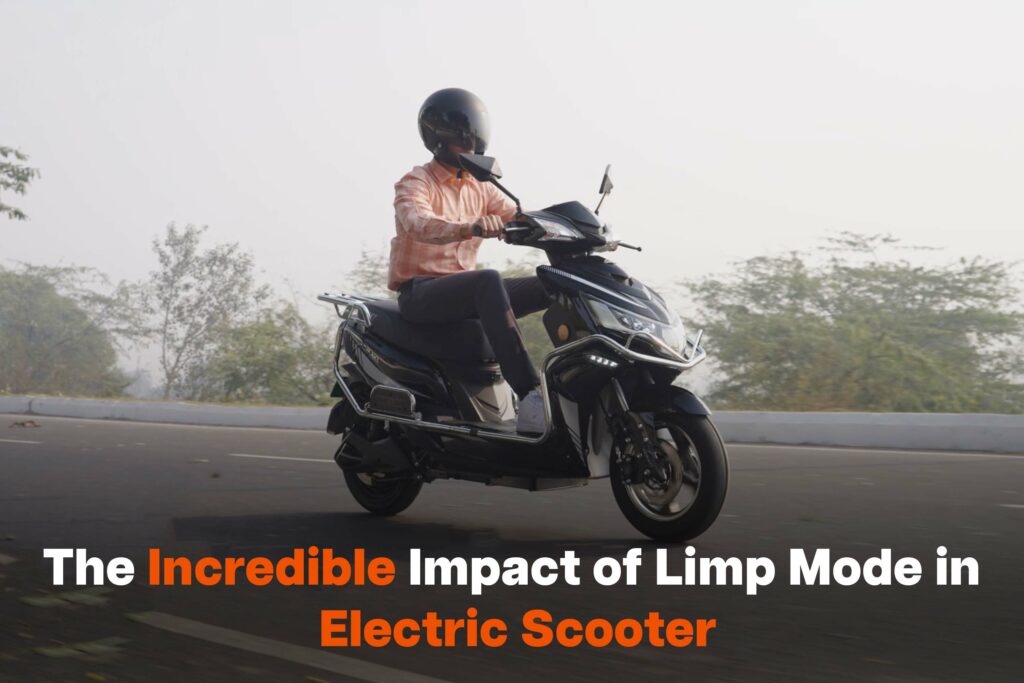Electric scooters have revolutionized personal mobility, offering eco-friendly and efficient ways to get around. However, like any other vehicle, they can face their share of issues. One such issue is the dreaded “Limp Mode.” In this article, we’ll explore what limp mode is, why electric scooters enter it, the impact on the battery, and how to address and fix this performance-limiting mode.
What Is Limp Mode in Electric Scooter?
Limp Mode in Electric Scooter is a safety feature that restricts the vehicle’s performance when it detects malfunctions or errors. It’s like a protective mechanism for both the rider and the scooter. When the scooter enters limp mode, it significantly reduces its power and speed, allowing you to “limp” to a safe location for diagnostics or repairs.
Why Does an Electric Scooter Enter Limp Mode?
There are several reasons why an electric scooter might enter limp mode. Common triggers include Electric Scooter power problems, sensor malfunctions, or other performance issues. For instance, if the scooter’s Throttle malfunctions or if there’s a problem with the battery or motor, the system may react by activating limp mode to prevent any further damage.
What is the Impact of Limp Mode on the Battery of an Electric Scooter?

The limp mode can have a significant impact on the electric scooter’s battery. Since the scooter operates at reduced power in this mode, it drains the battery less quickly. However, prolonged use in limp mode may not be ideal for the battery’s overall health, as it can lead to increased charging cycles. It’s crucial to resolve the underlying issues that trigger limp mode to maintain the battery’s longevity.
How Can Limp Mode Be Fixed?
Resolving limp mode in an electric scooter often involves troubleshooting electric scooter issues and addressing the root cause of the problem. Here are steps to help you fix it:
- Diagnostic Codes in Electric Scooters: Modern electric scooter are equipped with diagnostic codes that can pinpoint the exact issue. Check these codes to identify the problem accurately.
- Limp Mode Troubleshooting: Investigate the reasons for entering limp mode. Is it due to an electrical fault, a sensor issue, or something else? Understanding the cause is the first step in resolving it.
- Electric Scooter Malfunctions: Repair or replace any malfunctioning components, such as the throttle, motor, or battery. It's essential to address these issues to exit limp mode successfully.
- Limp Mode Repair: Seek professional help if you're unsure about the repairs. Skilled technicians can diagnose and fix the problems more effectively.
- Electric Scooter Performance Problems: After resolving the issues, test your scooter to ensure it's performing optimally. This includes checking the throttle response, battery capacity, and overall performance.
- Limp Mode Solutions: Implement preventive measures to avoid future limp mode situations. Regular maintenance and care can help you keep your electric scooter in top shape.
In conclusion, the limp mode in an electric scooter serves as a safeguard mechanism, protecting you from potential hazards when the scooter faces issues. While it may seem like an inconvenience, it’s essential for your safety and the longevity of your scooter. By understanding the causes and solutions for limp mode, you can get back on the road with confidence, ensuring a smooth and trouble-free ride.
Don’t let limp mode deter you from enjoying the many benefits of electric scooters. Address the issues promptly, and you’ll be back to your eco-friendly commute in no time.



